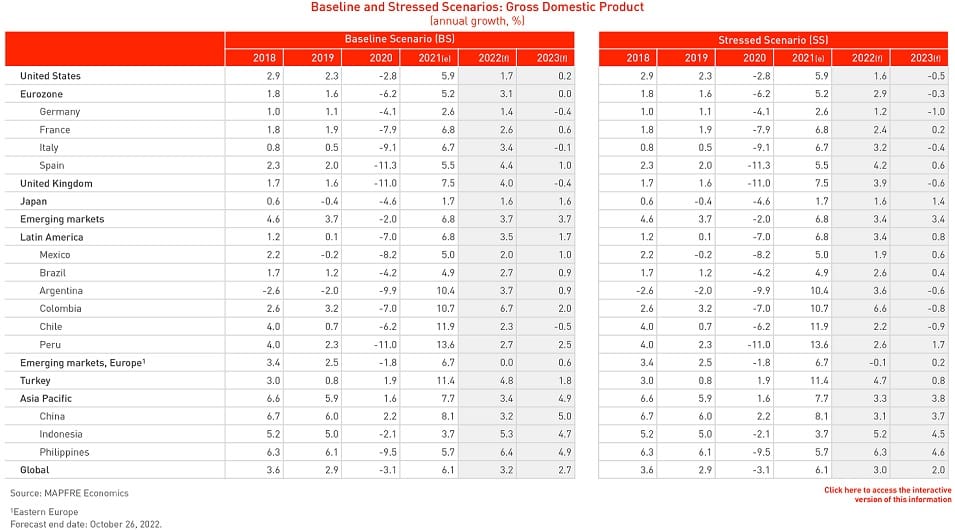Global Economic Outlook (Q4 2022)
Author: MAPFRE Economics
Summary of report’s conclusions:
MAPFRE Economics
2022 Economic and Industry Outlook:
Fourth Quarter Perspectives
Madrid, Fundación MAPFRE, October 2022
The events and developments being produced over the course of 2022 are deteriorating moderate growth perspectives. We are faced with a global economy that is continuing to enter a phase of exhaustion, accompanied by tighter financial conditions, in line with more entrenched and persistent inflation.
Possible changes are revealed at the global level where the trend towards a multipolar world could accelerate, underpinning the declining dynamics of globalization. Various factors are affecting these changes. First, a geopolitical reorganization with restructuring processes in progress that could be prolonged over time, due to the remaining tensions due to the conflict between Russia and Ukraine. Similarly, in Asia, political pressure is building around Taiwan, with China maintaining its reluctance to the Indo-Pacific trade alliance proposed by the United States, while tension in the region is increasing due to the escalation between the two Koreas and Japan, as well as the risk of a new Arab Spring in the Middle East. Second, a monetary policy that is beginning to show its first undesired consequences in the financial markets, such as volatility, lack of liquidity and correction of asset valuations. Third, a fiscal policy with the need to implement a new approach towards increasingly selective decisions, as fiscal space is depleted and the ability to access financing is faced without the umbrella of central banks, and which, simultaneously, must advance on a path towards medium-term sustainability. And finally, supply chains that, although showing a general relief, are still burdened by the wear and tear accumulated in certain links during the bottlenecks caused by the aftermath of Covid-19 and the conflict in Ukraine, as well as by super-specialization, giving way to less integrated and more local supply chains.
In line with previous reports, the baseline scenario maintains the view of a short and medium-term outlook of global stagflation, with limited incursions of some countries into recession, but no global worsening for the time being. Thus, the global GDP growth forecast for 2022 and 2023 would be 3.2% and 2.7%, respectively. In contrast, in the stressed scenario (of an alternative and more pessimistic nature) the global economic growth forecast would be 3.0% and 2.0% for 2022 and 2023, respectively. In this case, financial variables face a two-sigma shock and volatility at levels equivalent to those observed with the Covid-19 shock. This scenario presents a situation of global recession, without sufficient fiscal space to solve it and with certain selective fiscal dominance events, where inflation, although moderated by the contraction of economic activity, becomes a structural phenomenon that survives, leading to a short-lived inflationary recession. Accordingly, the following table presents the economic growth forecasts for a set of selected economies considered in the report:
The complete analysis of the global economic environment update can be found in the report 2022 Economic and Industry Outlook: Fourth Quarter Perspectives, prepared by MAPFRE Economics, which is available at the following link:





